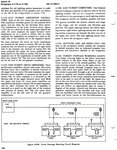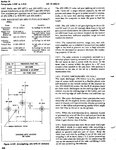DaveB.inVa
Airman 1st Class
- 225
- Dec 20, 2004
I've heard many times that there were B-50's over Korea, not as bombers but as ELINT ferrets. In fact one got shot down and crashed into the sea of Japan. I have a few pictures in books about the B-50's doing recon over there too.
Anyway I thought I'd email another guy I know. His name is Bob Mann and he has written a book on the B-29. He flew in them during Korea but was on a weather recon squadron on Guam. The cool part about him is he lives in the same town where I go to college. I've been out to his place and its awesome. He has a huge database on every (and I mean EVERY) B-29 built. His file is basically a huge excel file with each B-29 serial number. Beside that he has crew lists, notable features about the aircraft, what happened to it (ie lost, reclaimed, transferred to RAF). In other words its very very complete and I got to go check it out when I took a class last summer and had some free time!!
Anyway Bob sent me a couple things from his file which is AN 01-20EJ-2, the maintenance manual for the B-29.
He sent me the two relevant pages to the gunnery system in the manual. Since these are from the maintenance manual I think it'll be ok to post them since they are by now at least readily available if you know where to get the manual. In other words Im not stepping in on anything copyrighted in Bob's book!
He also said that the main guns were best described as computer assisted that required considerable input to the computer which then selects an aiming point for the guns in the turret selected.
Heres a link to Bob's book with some info about it.
http://www.alibris.com/search/searc...n&matches=6&qsort=r&cm_re=works*listing*title
Anyway I thought I'd email another guy I know. His name is Bob Mann and he has written a book on the B-29. He flew in them during Korea but was on a weather recon squadron on Guam. The cool part about him is he lives in the same town where I go to college. I've been out to his place and its awesome. He has a huge database on every (and I mean EVERY) B-29 built. His file is basically a huge excel file with each B-29 serial number. Beside that he has crew lists, notable features about the aircraft, what happened to it (ie lost, reclaimed, transferred to RAF). In other words its very very complete and I got to go check it out when I took a class last summer and had some free time!!
Anyway Bob sent me a couple things from his file which is AN 01-20EJ-2, the maintenance manual for the B-29.
He sent me the two relevant pages to the gunnery system in the manual. Since these are from the maintenance manual I think it'll be ok to post them since they are by now at least readily available if you know where to get the manual. In other words Im not stepping in on anything copyrighted in Bob's book!
He also said that the main guns were best described as computer assisted that required considerable input to the computer which then selects an aiming point for the guns in the turret selected.
Heres a link to Bob's book with some info about it.
http://www.alibris.com/search/searc...n&matches=6&qsort=r&cm_re=works*listing*title



